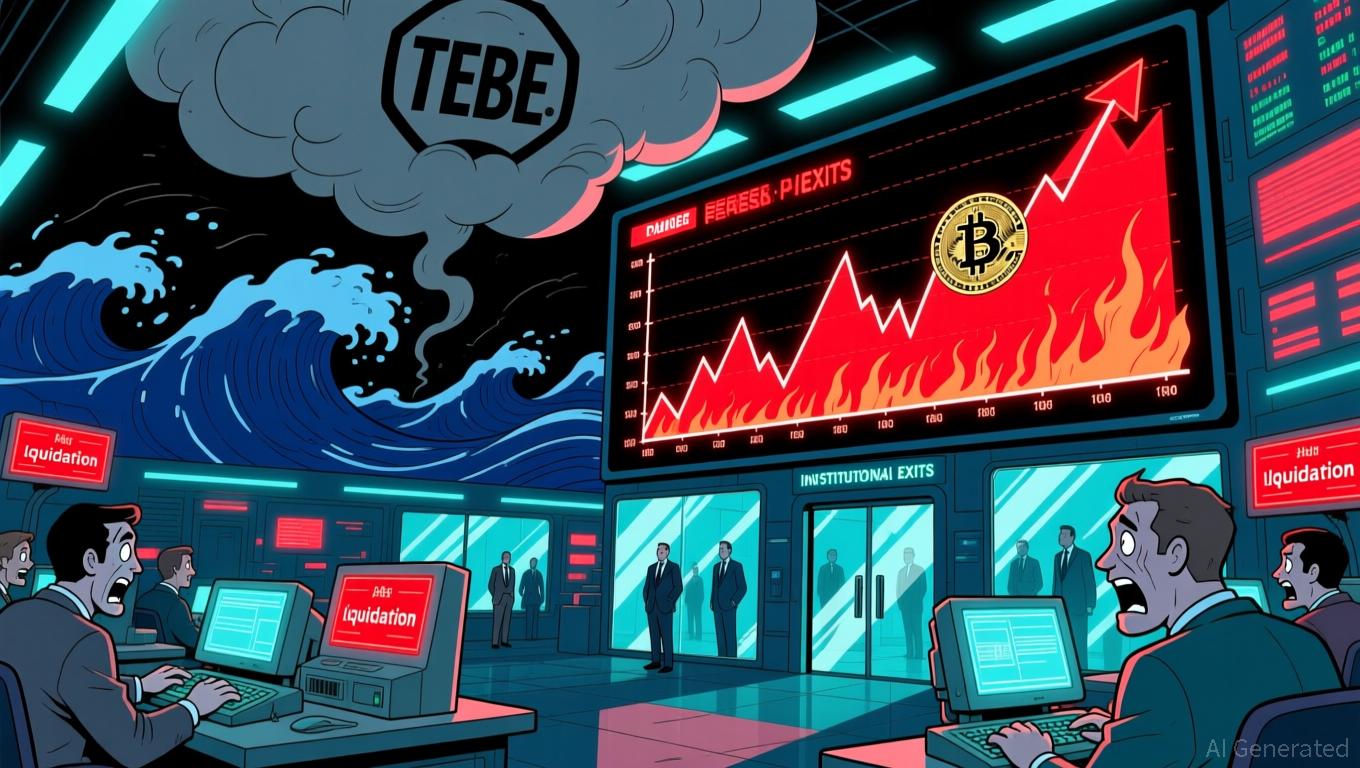Zcash Halving and Its Impact on the Privacy Coin Market
- Zcash's November 2025 halving reduced block rewards by 50%, reinforcing its deflationary model and drawing Bitcoin-like scarcity comparisons. - Arthur Hayes' "shielded liquidity" strategy boosted Zcash's fee revenue 560% but risks amplifying price volatility through reduced tradable supply. - Institutional adoption via Grayscale Zcash Trust ($137M AUM) contrasts with Monero's rigid anonymity, as regulatory frameworks like EU AMLR loom. - Zcash surged 1,172% YTD to $589, outperforming Bitcoin during bear
Supply Shifts and Shielded Transactions: Evolving Market Structure
The immediate result of the halving was a 50% cut in new ZEC issuance, but its wider impact is tied to the increasing use of Zcash’s privacy capabilities. Currently, shielded pools account for 27–30% of all circulating ZEC, with a notable migration to the newer Orchard protocol
This tactic has already had an impact: Zcash’s transaction fee income
Institutional Interest and Regulatory Turning Points
Institutional participation has played a major role in Zcash’s rally after the halving. The Grayscale Zcash Trust, which now oversees $137 million in assets, highlights the increasing confidence from traditional financial players

Market Swings and Investor Outlook: Two Sides of the Coin
The halving has heightened Zcash’s price swings, with its value
Yet, volatility also brings risk. Zcash experienced a 30-day price drop of over 35% in November 2025, exposing the dangers of speculative trading
Wider Effects on the Privacy Coin Sector
The Zcash halving has also altered the broader privacy coin market. For a brief period, Zcash’s market cap surpassed Monero’s, hitting $7.2 billion compared to XMR’s $6.3 billion
Still, Zcash’s lead is not guaranteed. Monero’s Fluorine Fermi upgrade in late 2025 improved its privacy features, and Litecoin’s experiments with hybrid privacy indicate growing competition. For Zcash, the challenge will be to sustain its balance between privacy and regulatory compliance—a delicate act that could shape its future prospects.
Conclusion: High Risk, High Potential
The November 2025 halving has placed Zcash at a pivotal moment. Its deflationary supply, growing institutional backing, and privacy advancements have fueled a record-breaking rally, but these benefits come with considerable risks. Ongoing regulatory uncertainty, possible miner sell-offs, and the volatility linked to shielded transactions could unsettle the market. For investors, Zcash offers a high-risk, high-reward proposition: a privacy-focused asset that could outperform Bitcoin during downturns, yet remains susceptible to regulatory actions and liquidity shocks.
As the privacy coin market continues to develop, Zcash’s ability to handle these obstacles will be crucial. Whether it cements its status as a leading privacy asset or is overtaken by regulatory and market shifts is still uncertain.
Disclaimer: The content of this article solely reflects the author's opinion and does not represent the platform in any capacity. This article is not intended to serve as a reference for making investment decisions.
You may also like
Bitcoin Updates: Institutions Turn to Bitcoin to Offset Dollar Risks, Acquire 18,700 BTC in November
- U.S. institutions added 18,700 BTC in November via legislative reforms and corporate strategy shifts, including Rep. Warren Davidson's Bitcoin for America Act. - The bill enables tax payments in BTC to fund a Strategic Bitcoin Reserve, potentially adding 4.3 million BTC by 2045 if 1% of taxes are remitted in crypto. - Corporate actors like Metaplanet ($150M BTC purchase) and BitMine Immersion ($11.2B crypto holdings) are reclassifying BTC as a core treasury asset. - Despite $3.79B in ETF outflows and BTC
Japan Brings Cryptocurrency in Line with Conventional Finance through Required Liability Reserves
- Japan's FSA mandates crypto exchanges to maintain liability reserves to cover hacking, fraud, and operational risks, aligning digital assets with traditional financial regulations. - The move aims to protect investors, stabilize markets, and treat virtual currencies with the same rigor as conventional securities, reflecting global scrutiny of crypto vulnerabilities. - By requiring capital buffers, Japan addresses systemic risks and positions itself as a fintech innovation hub, potentially influencing glo

Bitcoin News Update: Tether’s $5.7 Million Investment Shows Support for Rumble’s Shift Toward Crypto-Based Cloud Services
- Tether boosted its Rumble stake by $5.7M, buying 1.06M shares to signal confidence in the firm's cloud-crypto integration strategy. - The investment follows Rumble's Northern Data AG acquisition, expanding its GPU capacity and data centers for crypto infrastructure growth. - Tether agreed to $250M in GPU purchases and advertising, while Rumble's Bitcoin tipping features and $18.5M BTC reserves reinforce crypto alignment. - Rumble's stock surged 13% amid market optimism, though analysts maintain a "Hold"

Bitcoin News Update: Fed's Balancing Act: Crypto Crash Highlights Market Vulnerability
- Bitcoin fell to $82,605, its worst monthly decline since 2022, driven by Fed policy uncertainty, institutional outflows, and macroeconomic pressures. - Record $3.79B ETF outflows and $120B in crypto liquidations highlight waning confidence, with leveraged positions collapsing amid weak U.S. employment data. - Deutsche Bank and BofA's Hartnett warn of a "liquidity event," comparing the crisis to 2018, as stalled regulations and thinning liquidity expose market fragility. - Analysts debate a potential rebo
